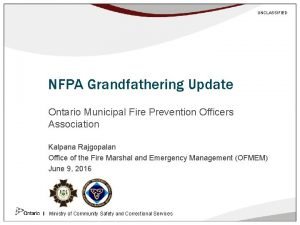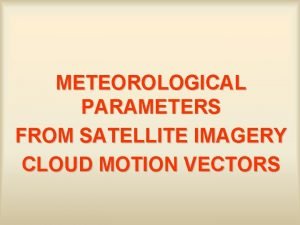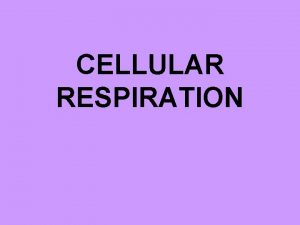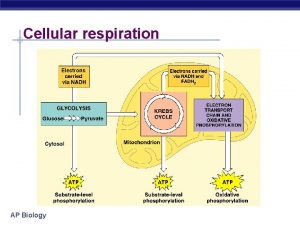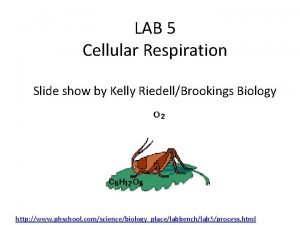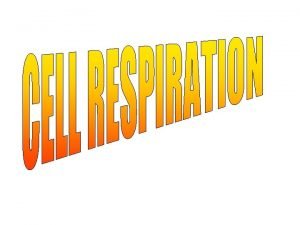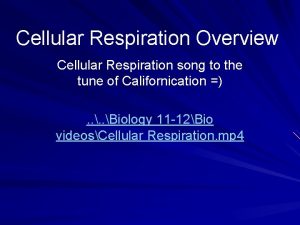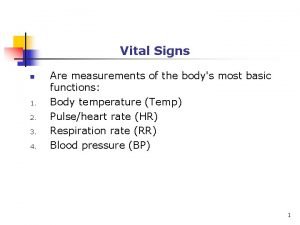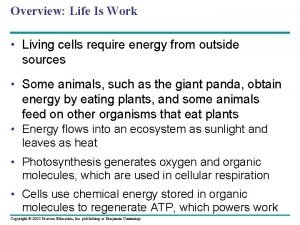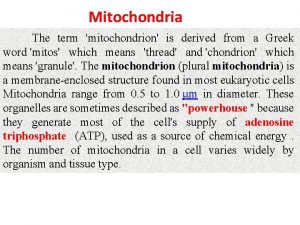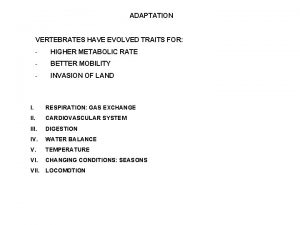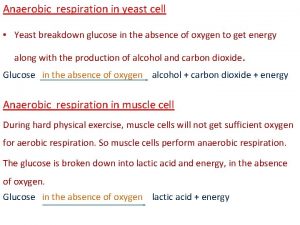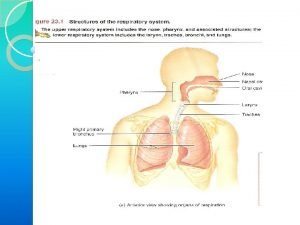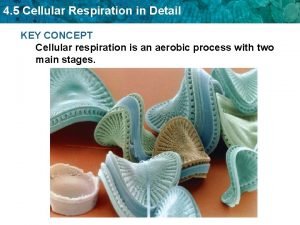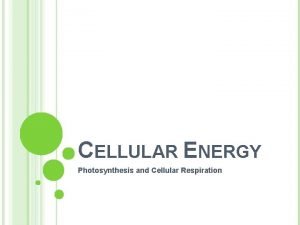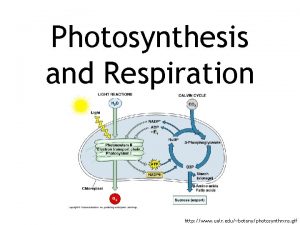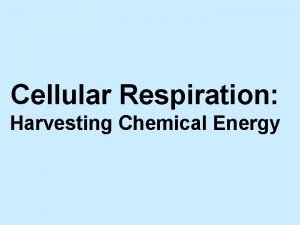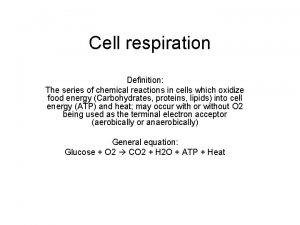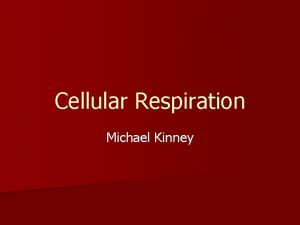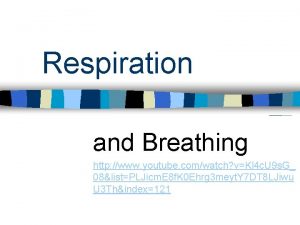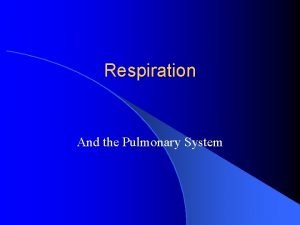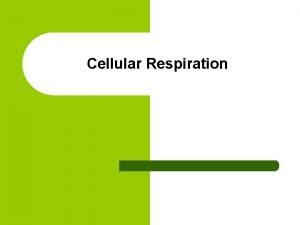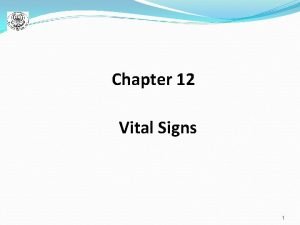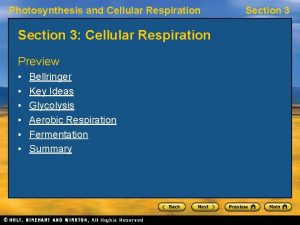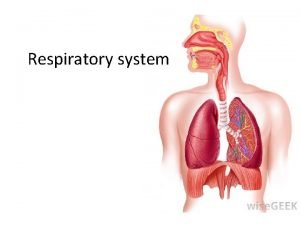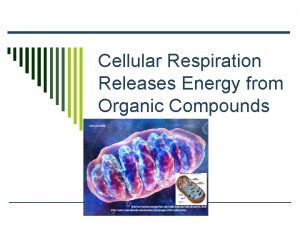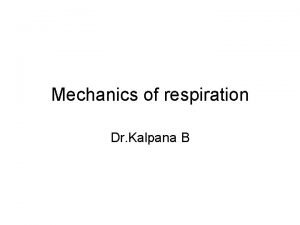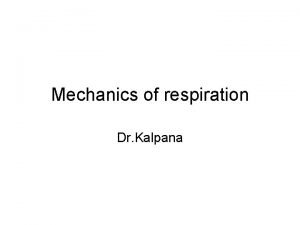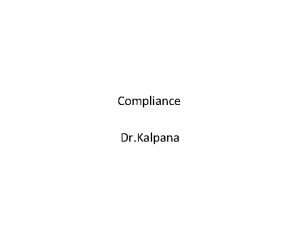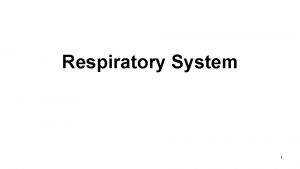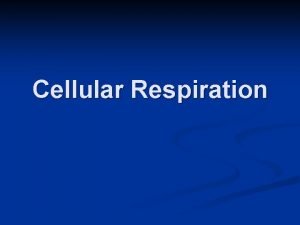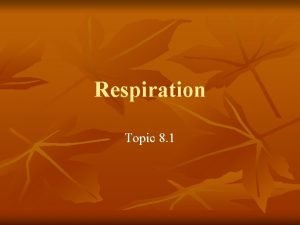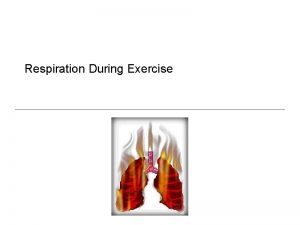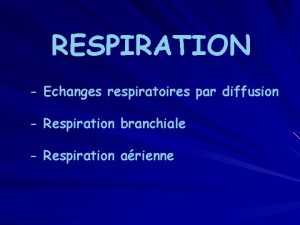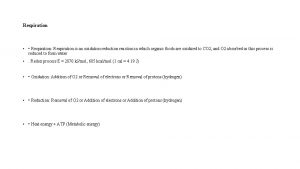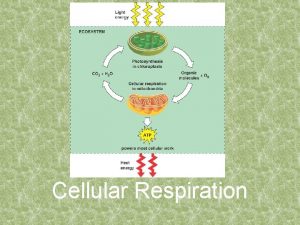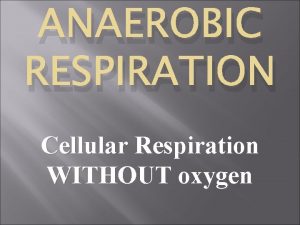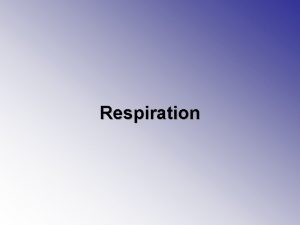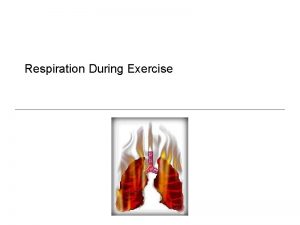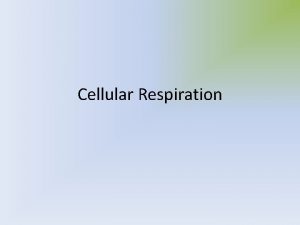Mechanics of respiration Dr Kalpana Compliance Compliance is





















![• Laplace’s law • Pressure [dyn/cm 2] = 2 × tension [dyn/cm] Radius[cm] • Laplace’s law • Pressure [dyn/cm 2] = 2 × tension [dyn/cm] Radius[cm]](https://slidetodoc.com/presentation_image_h/2f7a3d1dbb7ada4f7def9e4f3fa9257f/image-22.jpg)

















- Slides: 39

Mechanics of respiration Dr Kalpana

Compliance • Compliance is the measure of stretchability or elasticity or distensibility • Compliance is change in volume by unit change in pressure (∆V/∆P) –ml/cm H 2 O (L/cm H 2 O)

Types of compliances • As both lungs & thoracic cage has elastic nature –in the respiratory system the various compliances are; • Lung compliance (L. C) • Thoracic compliance (Th. C) • Total compliance (T. C) -- (both L. C & Th. C)

Normal value Compliance in relation to intra alveolar pressure Compliance of lungs and thorax 130 ml / 1 cm H 2 O pressure Compliance of lungs alone 0. 22 l when airway pressure is increased by 1 cm. H 2 O then lung expands by 0. 22 l • compliance of lung alone is 2 times compliance of lung and thorax.

• This is because , inside thorax, some energy is required to expand the thorax • lung can be distended such an extent due to • i) presence of large number of elastic fibers • And the peculiar arrangement of elastic fibers. • In the same way as an individual nylon fiber and a whole nylon stocking

Normal value Compliance in relation to intrapleural pressure Compliance of lungs and thorax 100 ml / 1 cm H 2 O pressure Compliance of lungs alone 220 ml / 1 cm H 2 O pressure

• Specific compliance – It is the compliance per unit volume • Compliance/FRC (in L per cm H 2 O per L)

Compliance of the Lungs • The extent to which the lungs will expand for each unit increase in transpulmonary pressure called the lung compliance. • The total compliance of both lungs together in the normal adult human being – 0. 22 L of air per cms of H 2 O transpulmonary pressure.


• The characteristics of the compliance diagram are determined by the elastic forces of the lungs. – (1) elastic forces of the lung tissue and – (2) elastic forces caused by surface tension of the fluid that lines the inside walls of the alveoli and other lung air spaces.

• P-V relationship is curved • At identical Ppl volume is less in I phase than in E phase. • Difference in distensibility of the lungs between I and E phase.


• Transpleural pressures required to expand airfilled lungs are about three times as great as those required to expand saline solution-filled lungs.

• If the air passages leading from the alveoli of the lungs are blocked, the surface tension in the alveoli tends to collapse the alveoli. • This creates positive pressure in the alveoli, attempting to push the air out.

Effect of the Thoracic Cage on Lung Expansibility • Total compliance (lung and chest wall together) is 100 m. L/cm H 2 O. • The compliance of the chest wall is decreased in – Obese people. – Musculoskeletal disorders (kyphoscoliosis).

Measurement of compliance • Compliance is measured in static condition • Measured by inspiring a series of known volume of air and simultaneously recording the intrapleural pressure of each • The air is expired in steps till the volume returns to the original prerespiratory level


If we record the pressure changes during breathing then we get Dynamic compliance

Surfactant, Surface Tension, and Collapse of the Alveoli • Surfactant is a surface active agent in water, which greatly reduces the surface tension of water. • It is secreted by special surfactant-secreting epithelial cells called type II alveolar epithelial cells (10 ℅ of the surface area of the alveoli). • These cells are granular, containing lipid inclusions that are secreted in the surfactant into the alveoli.

Components of Surfactant • Phospholipid dipalmitoylphosphatidylcholine • Surfactant apoproteins and • Calcium ions.

Surfactant Surface tension lowering agent • • Secreted from Type II cells • Contains – • Dipalmitoyl phosphatidyl choline (DPPC) (Dipalmitoyl lecithin) – 62% • Phosphatidyl glycerol – 5% • Other phospholipids – 10% • Neutral lipids – 13% • Protein – 8% (SPA-A, SP-B, SP-C, SP-D) • And calcium ions
![Laplaces law Pressure dyncm 2 2 tension dyncm Radiuscm • Laplace’s law • Pressure [dyn/cm 2] = 2 × tension [dyn/cm] Radius[cm]](https://slidetodoc.com/presentation_image_h/2f7a3d1dbb7ada4f7def9e4f3fa9257f/image-22.jpg)
• Laplace’s law • Pressure [dyn/cm 2] = 2 × tension [dyn/cm] Radius[cm]




Mechanism of action of Surfactant • Surfactant consist of mainly of– Phospholipids • Phospholipids have hydrophilic (phosphate portion) & hydrophobic (lipid portion) ends • The hydrophilic end dissolves in water and lines the alveoli • The hydrophobic is directed towards the alveolar air • This surface of phospholipids spreads over the alveoli and reduces the surface tension

Significance of surfactant • • Decreases Surface tension Decreases Compliance Respiratory work load is decreased Helps in stability of alveoli of unequal size Prevent collapse of alveoli during expiration Prevent bursting of alveoli during inspiration Keeps the alveoli dry (prevent pul. Congestion) • Role in defense within the lungs against infection and inflammation (SP-A, SP-D)

Factors affecting surfactant • Factors decreasing surfactant – 1. Occlusion of main bronchus 2. Occlusion of pulmonary artery 3. Cigarette smoking Factors increasing surfactant – 1. Thyroid hormone -- production 2. Glucocorticoids – accelerate maturation

• Surfactant normally begin to be secreted into the alveoli until between the sixth and seventh months of gestation, and in some case even later. • Premature babies have little or no surfactant in the alveoli when they are born, and their lungs have an extreme tendency to collapse (six to eight times that in a normal adult person). This causes the condition called respiratory distress syndrome of the newborn.

Clinical significance of • (Infant) Respiratory distress surfactant syndrome (IRDS) or • Hyaline membrane disease (due to deficiency of surfactant in fetal life) - Administration of phospholipid alone by inhalation - Administration of bovine surfactant (phospholipid and protein)


Work done of breathing • The work done by the respiratory muscles during respiration to overcome the resistance in the thorax and the respiratory tract

Work of Breathing • Under resting conditions, the respiratory muscles normally perform work to cause inspiration but not to cause expiration. • The work of inspiration can be divided into three fractions: (1) Compliance work or elastic work (65%) (2) Tissue resistance work (7%) (3) Airway resistance work (28%).

• During normal quiet respiration, only 3 to 5 percent of the total energy expended by the body is required for pulmonary ventilation. 0. 3 - 0. 8 kg-m/min. • The work of breathing is greatly increased in diseases such as Emphysema Asthma Congestive heart failure with dyspnea & orthopnea.

• Work done = Pressure x volume • Normal value of total work done = 0. 3 to 0. 8 kg m/min • Elastic work – 65% • Non-elastic work – 35%; • Work of breathing increases in – • Emphysema, asthma, congestive cardiac failure with dyspnea & orthopnea

Utilization of energy • Airway resistance • Elastic resistance of the lungs and the thorax • Non elastic viscous resistance

• Airway resistance The resistance offered to the passage of air through the respiratory tract

ØElastic resistance of the lungs and the thorax The energy required to expand lungs and thorax against elastic force.

ØNon- elastic viscous resistance The energy required to overcome the viscosity of lung tissue and tissues of thoracic cage
 Kalpana rajgopalan
Kalpana rajgopalan Kalpana had encyclopaedic knowledge means
Kalpana had encyclopaedic knowledge means Satellite derived winds
Satellite derived winds Internal and external respiration
Internal and external respiration External respiration vs internal respiration
External respiration vs internal respiration All cells must contain
All cells must contain Cellular respiration ap biology
Cellular respiration ap biology Lab bench cellular respiration
Lab bench cellular respiration Upper and lower airway
Upper and lower airway Meaning of cellular respiration
Meaning of cellular respiration Cellular respiration song
Cellular respiration song Chapter 6 cell energy photosynthesis and respiration
Chapter 6 cell energy photosynthesis and respiration Chapter 8 section 3 cellular respiration continued
Chapter 8 section 3 cellular respiration continued Respiration in plants
Respiration in plants Chapter 9: cellular respiration: harvesting chemical energy
Chapter 9: cellular respiration: harvesting chemical energy Radial pulse range
Radial pulse range Total atp produced in cellular respiration
Total atp produced in cellular respiration What is the physiology of respiration
What is the physiology of respiration Respiration flow chart
Respiration flow chart Respiration in terrestrial animals
Respiration in terrestrial animals Yeast respiration
Yeast respiration J receptors
J receptors Concept 5 cellular respiration
Concept 5 cellular respiration Cellular respiration chemical equation
Cellular respiration chemical equation Formula for photosynthesis and cellular respiration
Formula for photosynthesis and cellular respiration Traume behandling herning
Traume behandling herning What factors affect anaerobic respiration
What factors affect anaerobic respiration Cellular respiration equation
Cellular respiration equation Respiration definition
Respiration definition Cellular respiration redox
Cellular respiration redox Labeled mitochondria cellular respiration
Labeled mitochondria cellular respiration Youtube
Youtube Pulmonary ventilation
Pulmonary ventilation Overall reaction of cellular respiration
Overall reaction of cellular respiration Photosynthesis and cellular respiration jeopardy
Photosynthesis and cellular respiration jeopardy Vitals by age
Vitals by age Section 3 cellular respiration
Section 3 cellular respiration Alveoli and capillaries
Alveoli and capillaries Plants called sundews have rounded green leaves
Plants called sundews have rounded green leaves Role of cellular respiration
Role of cellular respiration
